Together to the finish line
7 Jun 2021
From all over the world to Munich: In the international Cell2Cell network, doctoral students are researching the mechanisms of parasites.
7 Jun 2021
From all over the world to Munich: In the international Cell2Cell network, doctoral students are researching the mechanisms of parasites.
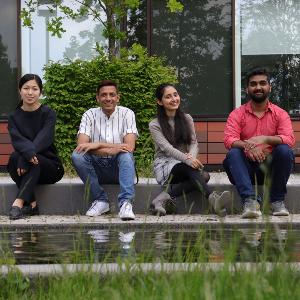
Why are some pathogens more infectious than others? How do parasites adapt to their hosts? LMU doctoral students Zhibek Keneskhanova, Vishnu Suma Sreechakram, Agnisrota Mazumder and Prateek Yadav want to get to the bottom of these questions. They are part of the new EU doctoral network "Cell2Cell Heterogeneity", funded by the European Commission under Horizon 2020.
The network brings together research groups from academia and industry to investigate how heterogeneity in chromatin at the single-cell level enables pathogens within a population to successfully establish long-term infections.
Research groups in ten different countries, including Israel, Sweden and Portugal, will work together on different aspects of the same overarching question. The network is coordinated at LMU by Dr. Sigurd Braun (Physiological Chemistry, Faculty of Medicine) and Nicolai Siegel, Professor of Molecular Parasitology (Experimental Parasitology, Faculty of Veterinary Medicine).
I myself lived abroad for 15 years and always had the feeling that diversity in a working group greatly contributes to finding innovative solutions.Nicolai Siegel
Managing such a network is no easy task. That’s obvious in a project of this magnitude. For Siegel, however, the international focus is fundamental to the success of the project. "I myself lived abroad for 15 years and always had the feeling that diversity in a working group greatly contributes to finding innovative solutions," he says. "So I'm very pleased that scientists from all over the world are interested in our work, and are willing to make the journey to Munich, which has not been easy.“
Indeed, there were many obstacles to be overcome, especially at the beginning of the research initiative. Just when the selection process for the new PhD program began in early 2020, the coronavirus pandemic was spreading around the world. Although the interviews could be conducted virtually, "the lockdown led to the closure of embassies and airports in most European countries. Candidates who had already been identified were stuck in their home countries, and were unable to travel to their host countries and start their projects," says Lara Hassan, Cell2Cell's network manager.
It wasn't until the end of 2020 that all the PhD candidates were finally able to reach their host countries. But in the meantime, Keneskhanova, Sreechakram, Mazumder and Yadav have settled in well in Munich. Here they talk about their fascination for biology, their reasons for wanting to do research at LMU and why international collaboration is so important to them.
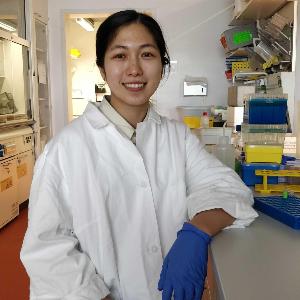
Zhibek Keneskhanova
"When I was in middle school, I used to put my textbooks under my pillow before the exams, believing that the knowledge would somehow get transferred to my brain," says Zhibek Keneskhanova – and laughs. She comes from Kazakhstan, having completed her Bachelor's and Master's degrees at Nazarbayev University. Perhaps it was indeed her trick with the book (but more probably her enthusiasm for biology) that explains why she is now doing her PhD in Nicolai Siegel's group in Munich as a member of the Cell2Cell network.
So why did she choose LMU? For one thing, during her interviews she was very enthusiastic about the research project and the people in the lab. “And LMU’s vibrant scientific community played a very important part in my final decision to start the doctorate here. The university offers a myriad of opportunities to grow as a researcher and as an individual.”
Keneskhanova’s group studies genome architecture and antigen variation, using the African parasite Trypanosoma brucei as a model organism. "T. brucei is the causative agent of sleeping sickness in humans and nagana in livestock. It has evolved a very efficient immune evasion strategy: it periodically varies its surface antigen to avoid complete clearance by the host immune system, which results in persistent infection,” she explains
Zhibek Keneskhanova’s PhD project focuses on the molecular events that underlie the antigenic switching mechanism in the parasites and how the frequency of variation is regulated. Keneskhanova finds international cooperation particularly important for her research: "The network brings together people from across the globe. Because of this, international cooperation is at the heart of the success of the whole network. Every student has the opportunity to receive the necessary training in any of the participating labs. We share ideas, knowledge and enthusiasm with each other, which makes the ITN a very tight community.”
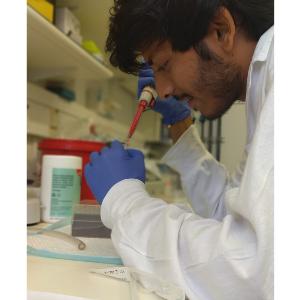
Prateek Yadav
Prateek Yadav, who is from India, has been around the world quite a bit. “I love to travel,” he says. “I once traveled through 12 countries and 65 cities in one year.” Even during his Bachelor's degree, he traveled internationally and completed a number of internships, for example at the University of Michigan (USA) and the Weizmann Institute of Science (Israel), and he took the opportunity to do his Master's thesis at the Helmholtz Zentrum/TU Munich.
"My academic and research background whetted my appetite to continue in biology, and I decided to start a PhD program in parasite biology." He chose LMU and Nicolai Siegel's research group. "The state-of-the-art and cutting-edge technology at LMU and its affiliated institutes will have a significant impact on my PhD, and ultimately on my professional career. I also have the opportunity to exchange ideas with professionals and experienced people in the field.”
The question Yadav is trying to answer during his PhD is: "How does genome architecture change during a switch in surface glycoprotein expression in Trypanosoma brucei? Antigenic variation is one of the primary strategies used by many pathogens to evade the host immune response. It refers to the ability of the pathogen to modify the identity of proteins displayed to the host immune system, making it difficult for the host to remove the pathogen. T. brucei contains the largest number of surface antigens so far described. The variant surface glycoprotein (VSG) is the most prominent and has more than 2500 isoforms. Our goal is to visualize genome architecture during VSG switching in T. brucei cells by establishing a CRISPR-dCas9-based imaging system.”
One of the aspects of the Cell2Cell PhD program that Yadav likes most is the promotion of international collaboration. “Collaboration makes the knowledge base accessible to all. Just recently, we all learned how important international collaboration is. It helps address global issues like a pandemic.”
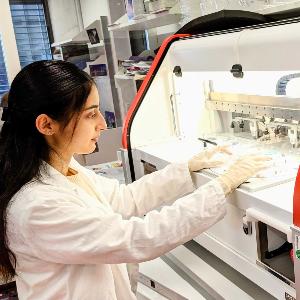
To find out where Agnisrota Mazumder's interest in epigenetics came from, you have to go back to the very beginning. Not to the beginning of her studies. Not even to the day she started school. Much further: to the day she was born. "My inquisitiveness about epigenetics came from the fact that I am a monozygotic twin," she says. "Because of that, I wondered early on why identical twins inherit the same genes from their parents but still have different physical characteristics and predispositions to disease.“
Her path took Agnisrota Mazumder from her hometown of Kolkata in India, where she completed her Bachelor's degree, to the Central University of Kerala on the Malabar Coast in southwestern India for her Master's degree, and finally to Dr. Sigurd Braun's laboratoryat LMU as part of the Cell2Cell PhD program. As a member of Braun’s team, she is conducting research to decipher – at the single-cell level, using a fluorescent-based reporter system – the mechanism that regulates the spread of heterochromatin within subtelomeres in the yeast species Schizosaccharomyces pombe.
Unlike baker’s yeast, S. pombe reproduces by cell division. “It’s easy to make genetic modifications to it because of its simply knit genome,” she explains. By understanding the dynamics of heterochromatin spreading at the subtelomeres and elucidating the molecular mechanisms that govern this, Agnisrota eventually hopes to be able to draw conclusions relating to the question that originally motivated her to study epigenetics.
The decisive factor in her decision to come to LMU was not only the university's reputation or its location in the heart of Munich. For Mazumder, it was the international research environment: “The training network allows me to interact with many leaders in chromatin biology across Europe. I believe this is the ideal platform that will allow me to pursue my goal of becoming a specialist in chromatin biology and bioinformatics.”
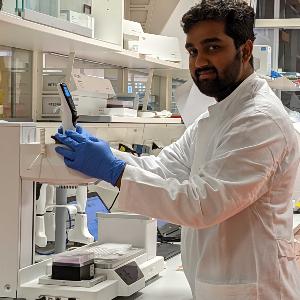
Vishnu Suma Sreechakram would never have dreamed that he would now be doing research in the Cell2Cell program at LMU – because he hadn’t planned to study biology, let alone genetics in the first place. “In my first year at university, I wanted to enroll for a mathematics degree. I only discovered my love for biology by chance,” he recalls. "Fortunately, my university was flexible enough to allow me to change my major in midstream.”
Like some of his Cell2Cell colleagues, he grew up in India. After graduation, he decided to apply to the program. It was a decision based largely on LMU's reputation and research strength. “LMU is one of the most renowned universities in the world," he explains. “I have read many exciting studies by LMU research groups in prestigious journals. That's what led me to do the research as part of my PhD in Munich.”
In the Braun Lab at LMU's Biomedical Center, he is now investigating how cells respond to environmental influences and how the genome and phenotype change in this context. His experiments with Schizosaccharomyces pombe could one day provide information about which environmental influences result in genome changes and what mechanisms underlie the changes.
For his research, he also draws on the extensive Cell2Cell network and the Braun Lab’s contacts. For example, he is currently planning collaborations with research labs in Hungary, France and Israel. “International collaboration is essential for research in our field. Researchers from different locations bring very different skill sets. And the Cell2Cell network brings them together to work on a common question.”